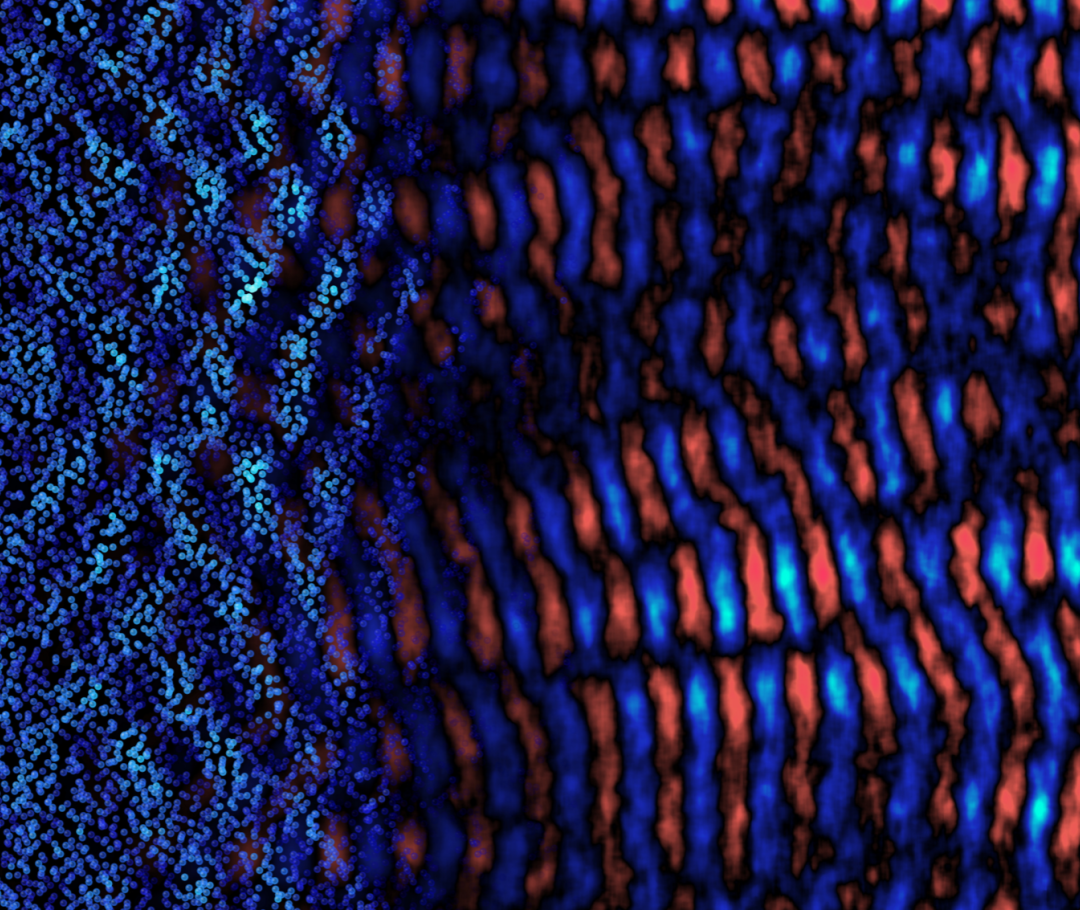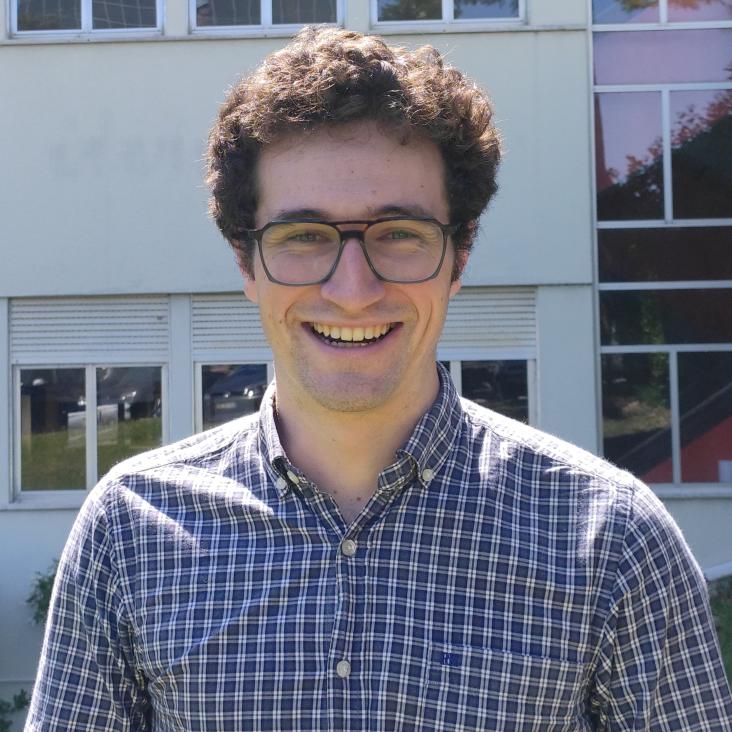My research interests are on kinetic extreme plasma physics. My work combines analytical theory with large-scale PIC simulations to understand how electrodynamic effects change kinetic plasma processes. Current directions include how extreme plasmas can produce coherent radiation, the kinetics of electron-positron plasmas, how does intense radiation interact with extreme plasmas and modelling all of these systems with large-scale simulations. A parallel work focuses on studying laboratory analogues: translating theory into experimental conditions, that can be tested in high-energy-density facilities. I welcome conversations with experimentalists and theorists interested in extreme plasma physics, from compact-object astrophysics to laboratory platforms. If this intersects your interests, feel free to get in touch by email.

Large scale PIC simulations of extreme plasmas.
This image shows the boundary between a plasma (left) and the surrounding vacuum (right). Inside the plasma, electrons and positrons trigger the electron cyclotron maser instability, generating ripples—plasma waves—that convert into escaping radio waves. The striking uniformity of the wave pattern reveals the coherence of the emitted radiation.


